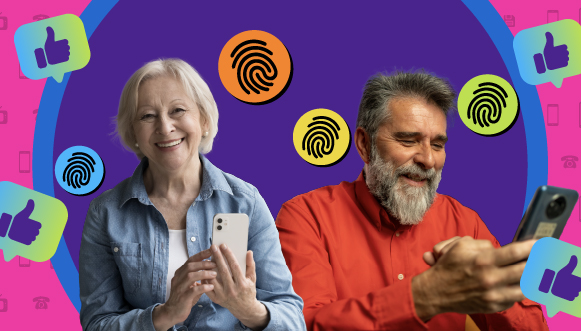
October is Cyber Security Awareness Month in Canada and this year we’re ushering in a new generation: Generation Cyber Safe.
Online security affects all Canadians, regardless of what year they were born. That’s why this year’s theme, Generation Cyber Safe, celebrates the unique strengths each of us has when it comes to staying safe online. This generation is all about attitude: being committed to keeping yourself secure online and making the internet a safe place for everyone.
Being a part of Generation Cyber Safe means understanding the importance of securing your accounts – which is something that 95%Footnote 1 of Baby Boomers are leading the way in! This week, we’re exploring the various ways to improve your account security. Here are some topics we’re covering during week one:
Strong passwords and passphrases
Passwords and passphrases are your first line of defence when it comes to protecting your accounts. This week, find out how to create strong and unique passwords and passphrases for your accounts and why it’s so important. To get started, make sure your passwords are at least 12 characters long and include random numbers and characters. Your passphrases should be at least 15 characters long and include four or more random words.
Password managers
Creating (and remembering) strong and unique passwords and passphrases for each of your accounts can feel overwhelming. Password managers can help! Learn how to choose the best password manager for you and how password managers can save you time and effort when it comes to account security.
Multi-factor authentication (MFA)
Multi-factor authentication (MFA) adds an extra layer of security to your accounts by requiring a second form of verification in addition to your password or passphrase. This can be a PIN, a biometric (like a fingerprint or facial recognition) or an object you own, like a token. Be sure to enable MFA whenever possible to improve your account security.
Credential Stuffing
Credential stuffing is an automated cyber attack that uses stolen credentials from one website to gain unauthorized access to other accounts sharing the same username, email and password combination. It’s one of the main reasons why you should use unique passwords and passphrases for each of your accounts. Using unique passwords, MFA and password managers can help prevent these attacks.
Limiting the information that you share online
Cyber criminals are experts at stealing information. One of the ways they do this is by looking at your social media accounts or searching information about you online, like discovering where you work and who you’re connected with online. Limiting the information that you share online can help to avoid your accounts from getting compromised.
Conclusion
Join Generation Cyber Safe by learning how to secure your accounts with MFA, password managers, strong passwords and passphrases and more!